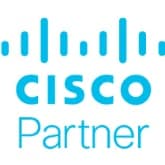March 27, 2023
Stopping Loss and Deterring Crime with Retail IT
From burglary to inventory shrinkage, retail companies are looking to tech solutions to minimize loss and improve inventory management.
IN THIS ARTICLE
The Challenges of Loss Prevention
Nuisance Activity in the Retail Sector
Technologies to Prevent Loss and Improve Security
Key Outcomes of Loss Prevention and Security Solutions
Loss prevention is a challenge as old as the retail sector itself.
Retailers know that they will inevitably lose some of their inventory and revenue to shoplifters, dishonest employees and even, increasingly, organized retail crime. They can only hope to minimize the number of incidents and total dollars lost, make recoveries where possible, and adopt a set of tools and strategies to help them detect and deter illicit activities.
Even before the COVID-19 pandemic, retail companies struggled to effectively manage their inventory. The retail landscape has shifted significantly since then. Customer expectations and store activities changed rapidly as people and companies scrambled to adapt to a new normal. The pandemic spurred many retailers to deploy new technologies, including contactless payment systems, mobile apps and self-checkout. But they have created new inventory management headaches and exposed retailers to vulnerabilities that savvy shoplifters and dishonest employees quickly learned to exploit.
In a 2022 survey, the National Retail Federation found that the pandemic coincided with an increase in theft and other incidents, including violence. Part of the problem can be attributed to pandemic-related staffing challenges. According to NRF, some stores lack enough employees to deter crimes of opportunity.
Loss prevention firm Jack L. Hayes International also found a number of new challenges facing retailers in its 2022 survey. The average theft reported by retailers in that survey was nearly $1,200 per incident (up more than 25 percent from the year before), with less than 8 percent of total losses resulting in a recovery.
To overcome these challenges, retailers must strategically adopt new solutions and best practices that will help them optimize their loss prevention efforts.
Shoplifting and Employee Dishonesty
Along with garden-variety theft, stores must watch out for incidents such as “under ringing” (when an employee or shopper intentionally does not ring up all items) and “sweethearting” (when an employee deliberately undercharges a friend or accomplice).
Fraud
Returns are an area ripe for fraudsters, some of whom attempt to bring used or stolen items back to the store, or even swap merchandise out of boxes before initiating returns.
Organized Retail Crime
Retailers have reported an increase in organized retail crime, which is sometimes carried out by criminals who move from store to store, stealing high-demand items to resell at the behest of a crime leader.
Inventory Management: By the Numbers
1.4% The average retail shrinkage rate in 2021
$94.5 billion The total value of retail shrinkage losses in 2021, up nearly $4 billion from 2020
26.5% The increase in theft attributed to organized retail crime in 2021
52% The percentage of retailers that plan to increase their capital and equipment budgets to improve loss prevention
89% The percentage of retailers that say they need stronger analytics capabilities to improve the performance of their loss prevention teams
74% The percentage of retailers that experienced crimes related to gift cards in the past year
78% The percentage of retailers reporting an increase in guest-on-associate violence over the past five years
38% The percentage of retailers that have seen an increase in return fraud over the past five years
Source: National Retail Federation, 2022 Retail Security Survey: The State of National Retail Security and Organized Retail Crime, Sept. 14, 2022
Burglary and shoplifting aren’t the only crimes that retailers must contend with regularly. They also struggle with nuisance activity, in-store violence and cybercrime. All of these offenses threaten retailers’ profitability, and stores must find effective ways to curb them.
NUISANCE ACTIVITY
Compared with an employee stealing cash from a register or a shoplifter making off with an expensive video game system, loitering and panhandling might not sound like much to worry about. But nuisance activities like these can be precursors to more serious crimes, and they can also deter paying shoppers from entering a store. When stores become all-day hangouts for teenagers, for example, adult customers may take their business elsewhere, loiterers may begin to help themselves to snacks, and employees may turn a blind eye when the people committing these petty thefts have become their friends. Video surveillance is one of the most effective deterrents to nuisance activities, although improved lighting, posted warnings and security guards can also help.
VIOLENCE
“There was the customer who stomped on the face of a private security guard. … The person who drank gasoline and … an intoxicated shopper who pelted a worker with soup cans,” begins a June 2022 New York Times article about violence in retail settings. While not every incident is as colorful as drunken soup-can hurling, industry survey data shows that retailers have seen a marked increase in in-store violence in recent years. Incidents of violence can make stores less attractive to both shoppers and employees, of course; but retailers also simply have a responsibility to ensure that people are safe when shopping or working in their stores. Here again, video surveillance and security guards can help deter, de-escalate and investigate incidents. Employee training programs may also be helpful.
CYBERCRIME
According to NRF, nearly 59 percent of retailers have seen an increase in cybercrime over the past five years, and 55 percent say their loss prevention teams should be more involved in cybersecurity efforts. Many cyberattacks on retailers target customer information, which hackers use to commit identity theft or sell to other criminals on the black market. These attacks can expose retailers to steep fines, create large legal expenses and erode customer trust. Robust cybersecurity solutions such as next-generation firewalls, endpoint detection and response tools, and identity and access management solutions can help detect and prevent these attacks. Retailers should also consider third-party engagements such as vulnerability scanning, penetration testing and red teaming, which can help identify and remediate weaknesses in their IT environments.
What Loss Prevention Technologies Are Retailers Using?
In its 2022 Retail Security Survey, the National Retail Federation found that well under half of retailers are using emerging and advanced technologies in their loss prevention strategies.
When deployed effectively, many of these technologies can be used to provide greater threat awareness, NRF notes. “For example, license plate recognition systems, perimeter surveillance, facial recognition and multi-sensor parking lot surveillance towers/units can all help retailers detect when a potential threat has arrived on the premises, as well as gather information about suspects,” the report states.
39%
The percentage of retailers implementing or planning to implement radio-frequency identification systems
30%
The percentage of retailers implementing or planning to implement point-of-sale video analytics
18%
The percentage of retailers implementing or planning to implement self-service locking cases or lockers
14%
The percentage of retailers implementing or planning to implement artificial intelligence–based perimeter surveillance
12%
The percentage of retailers implementing or planning to implement multisensor parking lot surveillance units
4%
The percentage of retailers implementing or planning to implement AI-based behavior detection
Source: National Retail Federation, 2022 Retail Security Survey: The State of National Retail Security and Organized Retail Crime, Sept. 14, 2022
While no two retailers are the same, some technologies have a proven track record of helping stores to monitor their environments, detect suspicious activity, deter crime and respond effectively to incidents.
Enhanced Video Surveillance: For decades, stores have relied on video cameras to improve security. Today’s enhanced solutions make it even easier to spot specific people and behavior, often in real time (see “The Elements of Enhanced Video Surveillance”).
Analytics: Retail analytics software can detect anomalies and prevent them from causing chaos. In one example, a supermarket cashier accidentally entered the PLU code for avocados (4046) as the customer’s purchase quantity, then made the problem worse by initiating a return instead of voiding the sale. The store’s retail analytics software caught the problem, saving more than $8,000.
Radio-Frequency Identification: RFID tags are a simple and relatively inexpensive way for retailers to track items and prevent theft. Traditional inventory counts are labor-intensive and often unreliable. According to some studies, using RFID technology can improve inventory accuracy by 25 percent or more, and it can reduce shrinkage and theft by up to 2 percent.
Smart Shelves: Smart shelves use sensors to automatically detect when customers pick up products, helping to streamline ordering and prevent stock outages. Smart shelves can also be used as a loss prevention device, with stores setting up “anti-sweep alerts” that notify security staff if the amount of product removed from the shelf exceeds a certain threshold.
Self-Checkout Monitoring: Some customers use self-checkout as an opportunity to help themselves to additional items or steep discounts. There’s even a name — “the banana trick” — for pretending to ring up an expensive item while entering something much cheaper into the system. Some cameras use AI to identify transactions of interest for loss prevention teams to review.
Access Control Systems: Technologies that regulate entry into sensitive spaces, such as backrooms, can prevent unauthorized access and theft. The systems also create a digital trail that can help retailers with investigations when items go missing from these spaces.
License Plate Readers: Just as law enforcement agencies use license plate readers to investigate crimes, stores can use them to monitor their property and watch for known thieves. As a bonus, LPRs can help stores offer personalized service in drive-thrus and curbside pickup settings.
Loss Prevention Software: Specialized software applications can help retailers track their inventory, prevent theft and fraud, and manage their operations more efficiently. These programs may help stores achieve a “single source of truth” for all of their inventory and payment system data, allowing leaders to make connections and gather new insights.
The Elements of Enhanced Video Surveillance
When most people think of security cameras, they picture grainy, black-and-white footage shot from an odd overhead angle. But enhanced solutions offer features and capabilities that make it easier for stores to identify suspicious behavior and investigate incidents.
Enhanced video surveillance may include:
HIGH-RESOLUTION CAMERAS
A high-resolution security camera provides clearer and more detailed images than those from standard cameras. This enables better identification of people and activities, making it easier for security staff to detect and deter theft.
ANALYTICS
Enhanced solutions may feature built-in analytics software that can automatically detect potential security threats and alert store staff. For instance, an enhanced system may be able to tell when someone is lingering near high-ticket items for an unusually long time, or even detect attempts to conceal merchandise.
OBJECT DETECTION
Some systems can automatically spot the difference between corn on the cob and filet mignon. This comes in handy when a customer or employee has covertly switched price stickers to try to get a steep discount.
The goal of loss prevention teams isn’t to nab shoplifters and expose dishonest workers. Rather, it is to serve the larger mission of the company. Technologies aimed at improving loss prevention and store security can help retailers achieve these key outcomes:
Improved Customer Experience: It’s difficult to overstate the importance of the customer experience in retail. According to studies, 86 percent of shoppers are willing to pay more for a better customer experience, and 80 percent say their buying experience is just as important as the product or service that a business provides. Technologies such as enhanced video surveillance and analytics can help stores offer customers a safe, pleasant space to do their shopping. Meanwhile, solutions such as RFID and smart shelves can help stores prevent stock outages and help customers find the items they need, when they need them.
Increased Employee Retention: The ability to attract and retain talent has become an important competitive differentiator in virtually every sector, including retail. According to the U.S. Chamber of Commerce, the quit rate among retail workers hovered around 4 percent in fall 2022, well above the national average of 2.7 percent. By helping to reduce nuisance activities and in-store violence, technologies can create safer, more pleasant workspaces for retail associates. Solutions that detect theft by dishonest employees may also prevent good workers from becoming discouraged.
Better Inventory Management: If products aren’t on shelves, stores can’t sell them. The COVID-19 pandemic coincided with one of the most critical supply chain crises in recent memory, with shoppers scouring retail websites and driving from store to store in search of products ranging from laptops to baby formula and toilet paper. Technologies such as smart shelves, analytics and RFID don’t just reduce inventory shrinkage. They also help stores to streamline their ordering, ensure adequate inventory is on hand and locate items that aren’t where they’re supposed to be.
Higher Profits: According to the MIT Sloan Management Review, retailers can no longer alleviate margin pressure through cost cutting alone. Retailers are “developing more partnerships with third-party providers of data-driven services and experiences to create more value for their customers, but these strategies can lead to a profitability paradox in which they struggle to capture value in return,” the publication states. Add in rising labor costs and inflation, and many retailers are understandably feeling squeezed. Technologies that improve the customer experience while also reducing inventory shrinkage can help stores optimize revenue and minimize losses — two welcome developments as retailers seek to maximize their profits.
Key CDW Services
CDW works with partners to offer Video Surveillance Monitoring, which can help retailers de-escalate situations before they become costly or dangerous. Additionally, CDW’s solution architects can design a multicomponent nuisance and crime deterrence system that deploys the most advanced infrastructure to keep stores as secure as possible. Among the features and benefits:
- Professional dispatch agents monitor for suspicious activity in real time, leading to a faster response.
- Smart cameras keep tabs on important areas of a store and capture the details needed to evaluate each situation.
- Video analytics filter images to alert staff to any potentially suspicious activity.
- Integrated two-way audio allows store staff to directly address individuals, letting them know that they’re being watched — and potentially deterring them from engaging in criminal acts.
Story by Chris Black, Link Simpson and Andy Szanger







